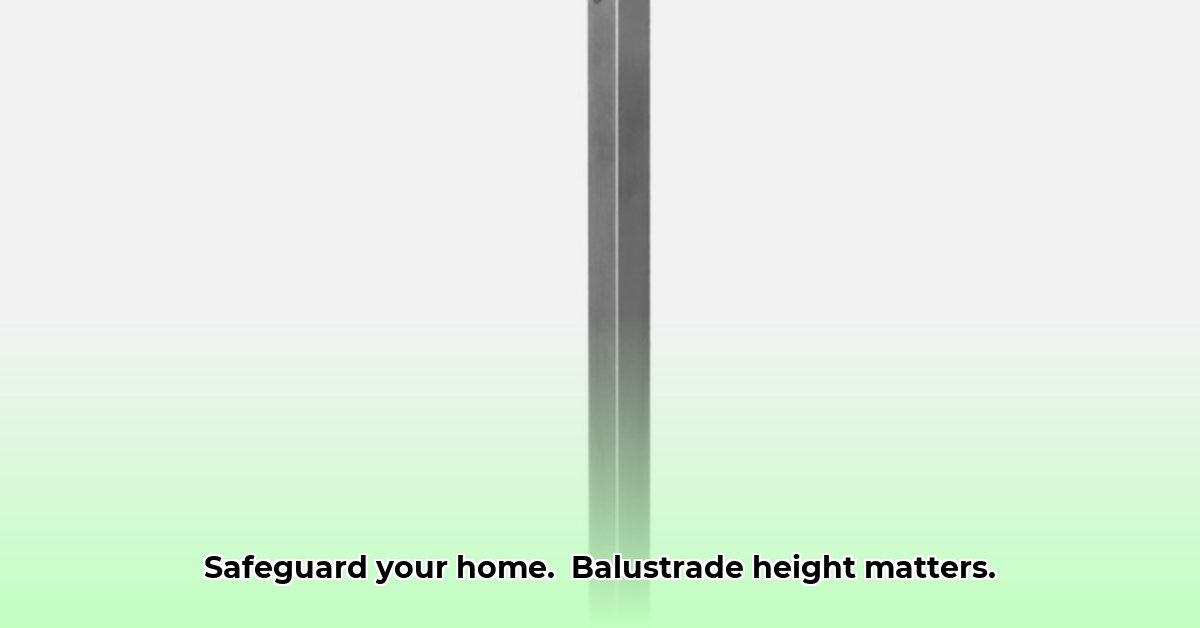
Understanding Dutch Balustrade Regulations: A Practical Guide for Architects, Designers, Contractors, Homeowners, and Inspectors
Thinking about building or renovating in the Netherlands? Getting your balustrade height right – your hoogte balustrade – is crucial for safety and compliance with Dutch building regulations, specifically the Bouwbesluit 2012. This guide simplifies the process, providing clear steps for determining correct balustrade height and ensuring compliance. We'll cover height requirements, line load calculations, material selection, and a step-by-step compliance guide for both new builds and renovations.
Height Requirements: Determining Minimum Balustrade Height
The Bouwbesluit 2012 dictates minimum balustrade heights based on the potential fall height. Generally, a drop of more than one metre requires a minimum balustrade height of 100cm (one metre). Drops exceeding 13 metres necessitate a 120cm minimum. However, for existing buildings, a 90cm minimum might suffice, but always verify this with the specific regulations for your project and location. It's always best to err on the side of caution and ensure your balustrade complies fully with all local regulations.
Height Discrepancies and Clarification
Differences in reported minimum heights across various sources often arise due to regional variations, specific building types (residential versus commercial), or interpretations of the Bouwbesluit 2012. To avoid ambiguity, always consult the official document and, when uncertain, seek advice from a qualified professional. A structural engineer can provide definitive answers, based on your specific project's parameters.
Line Load Calculation: Ensuring Structural Integrity
Line load refers to the maximum weight a balustrade can safely support along its length (measured in kN/m - kilonewtons per metre). This depends heavily on the anticipated use and the number of people potentially leaning on it (balcony, staircase, etc.). Underestimating the line load can lead to catastrophic failure. A structural engineer should perform these calculations—it's not a DIY task.
Simplified Line Load Estimation (For Illustrative Purposes Only)
While professional calculation is crucial, a simplified illustration follows:
- Identify anticipated load: Estimate the maximum number of people likely to lean on the balustrade simultaneously. A conservative estimate is best.
- Determine a Uniformly Distributed Load (UDL): Dutch regulations suggest UDL values ranging from 0.74 kN/m to 3 kN/m (or more), depending on the intended use (residential vs. commercial, balcony vs. staircase, etc.). Higher UDL values reflect higher anticipated loads.
- Calculate total load: Multiply the UDL by the length of the balustrade, ensuring a safety factor (specified in regulations) is included.
Example: A 2-metre balustrade with a UDL of 1 kN/m requires a capacity of at least 2 kN. But remember, this is a simplification. Professional advice is essential for accurate calculation and compliance. This section highlights the importance of professional input and avoids oversimplifying complex calculations.
Material Specifications: Choosing Suitable Materials
Choosing materials involves balancing aesthetics with strength. Common choices include steel, stainless steel, glass, and wood. However, their suitability depends entirely on the calculated line load and environmental factors. Always ensure the chosen materials meet or exceed the required strength standards based on the completed line load calculations, and comply with local building mandates.
Step-by-Step Compliance Guide: New Construction and Renovation
New Construction: A Compliant Build
- Measure the drop: Accurately measure the drop height (distance to the ground below).
- Determine minimum height: Consult the Bouwbesluit 2012 to determine the minimum balustrade height.
- Calculate the line load: Engage a structural engineer for precise line load calculations.
- Select appropriate materials: Choose materials capable of withstanding the calculated line load.
- Ensure proper installation: Hire a qualified installer to guarantee correct installation. Imperfect installation will compromise the structural integrity of your balustrade.
- Schedule a final inspection: Obtain the necessary inspection to ensure compliance with Dutch regulations.
Renovations: Compliant Upgrades
- Assess the existing balustrade: Evaluate its current height, material, and structural integrity.
- Determine required height and line load: Conduct similar calculations as with new construction, accounting for any structural limitations.
- Assess structural integrity: Inspect the supporting structure to ensure it can support the new load.
- Select appropriate materials: Choose materials that meet or exceed the required strength.
- Upgrade or replace: Upgrade or replace the existing balustrade to ensure full compliance.
- Schedule a final inspection: Have your upgrades fully inspected to ensure they meet the requirements.
Common Mistakes to Avoid
- Inaccurate measurements: Always double-check measurements to avoid errors.
- Ignoring line load calculations: This is a major safety risk.
- Using unsuitable materials: Ensure materials meet strength and regulatory standards.
- Poor installation: Engage professional installers to avoid structural weaknesses.
- Neglecting inspections: Inspections are mandatory for compliance.
Resources and Further Information
- Official Bouwbesluit 2012: The primary source for Dutch building regulations.
- Structural engineers: Essential for accurate line load calculations.
- Local council offices: Provide further information and guidance on building codes and regulations.
A Final Word on Balustrade Compliance
Complying with hoogte balustrade regulations is vital for safety and legal compliance. Always prioritize professional advice, accurate calculations, and thorough inspections. Remember, safety and peace of mind are priceless.